I am trying to use Python along with opencv, numpy and matplotlib to do some computer vision for a robot which will use a railing to navigate. I am currently extremely stuck have run out of places to look. My current code is:
import cv2
import numpy as np
import matplotlib.pyplot as plt
image = cv2.imread('railings.jpg')
railing_image = np.copy(image)
resized_image = cv2.resize(railing_image,(881,565))
gray = cv2.cvtColor(resized_image, cv2.COLOR_BGR2GRAY)
blur = cv2.GaussianBlur(gray, (5, 5), 0)
canny = cv2.Canny(blur, 85, 255)
cv2.imshow('test',canny)
image_array = np.array(canny)
ncols, nrows = image_array.shape
count = 0
scan = np.array
for x in range(0,image_array.shape[1]):
for y in range(0,image_array.shape[0]):
if image_array[y, x] == 0:
count += 1
scan = [scan, count]
print(scan)
plt.plot([0, count])
plt.axis([0, nrows, 0, ncols])
plt.show()
cv2.waitKey(0)
I am using a canny image which is stored in an array of 1's and 0's, the image I need represented is
The final result should look something like the following image.
I've tried using a histogram function but I've only managed to get that to output essentially a count of the number of times a 1 or 0 appears.
If anyone could help me or point me in the right direction that would produce a graph that represents the image pixels within a graph of height and width dimensions.
Thank you


